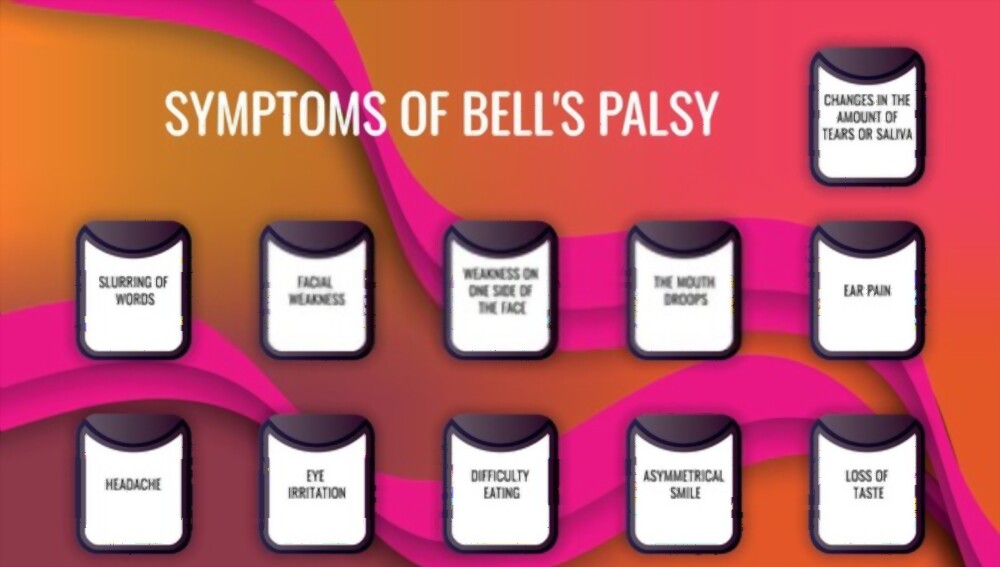Introduction –
Bell’s palsy is named after a Scottish anatomist, Sir Charles Bell. It is the most common acute mono-neuropathy which affects a single nerve, causing facial nerve weakness/ paralysis. Bell’s palsy is a rapid unilateral facial nerve paralysis which thus leads to complete loss of movement. It causes partial or complete inability to voluntarily move facial muscles on the affected side of the face. Additional long-term poor outcomes can be devastating to the patient.
Bells palsy clinical presentation-
- Bell’s palsy is rapid in onset (within 72 hours).
- self-limited.
- It is more common in those 15 to 45 years old
- Higher risk is seen in those with diabetes, upper respiratory ailments, or compromised immune systems and also during pregnancy.
- Bilateral bells is however rare
Causes of bells palsy-
- Herpes simplex virus infection around geniculate ganglion
- Infection
- RNA transcription in peripheral nerve axons
How does paralysis occur?
Facial paralysis occurs due to facial nerve inflammation. As the facial nerve travels in a narrow canal, inflammation further leads to nerve compression. Thi thus may result in temporary or permanent nerve damage.
Symptoms after paralysis-

The facial nerve carries nerve impulses to muscles of the face. It also supplies to the lacrimal glands, salivary glands, stapedius muscle, taste fibers from the anterior tongue and posterior ear canal. Accordingly, patients with Bell’s palsy may experience the following symptoms
- dryness of the eye or mouth,
- taste disturbance or loss,
- hyperacusis, and
- sagging of the eyelid
- drooping of corner of the mouth
- Ipsilateral pain around the ear or face
- Inability or difficulty to use face muscles on one side.
Severity grading on paralysis based on functional classification-
Cases of mild dysfunction-
- Slight weakness present.
- At rest: normal symmetry of forehead
- ability to close eye is with minimal effort and thus slight asymmetry is seen
- ability to move corners of mouth
- Absence of synkinesis, contracture, or hemifacial spasm
Moderate dysfunction-
- Moderate weakness present
- At rest: normal symmetry and tone
- Motion:only slight movement of forehead,
- ability to close eye requires maximal effort and thus obvious asymmetry is seen
- ability to move corners of mouth requires maximal effort
- Synkinesis, contracture or hemifacial spasm severe enough to interfere with function
Severe dysfunction-
- At rest: asymmetric with drooping of corner of mouth
- absence of nasal labial fold
- Motion: no movement of forehead, incomplete closure of eye and slight movement of corner of mouth.
- Synkinesis, contracture, and hemifacial spasm usually absent.
Complete paralysis-
- loss of tone
- no motion present
- no synkinesis, contracture, or hemifacial spasm.
Exploring treatment options-
Most patients with Bell’s palsy show some recovery without intervention within 2 to 3 weeks and completely recover within 3 to 4 months. Moreover, even without treatment, facial function is completely restored in approximately 70% of patients within 6 months. However as many as 30% of patients do not recover completely. For cases which do not recover surgical decompression of the facial nerve may be done.
Physiotherapy broadly encompasses heat therapy, electrostimulation, mime therapy and biofeedback. It can therefore be done for patients who have incomplete recovery and who have developed hypertonia, hyperkinesis or synkinesis.
Also read- https://vcurehealthcare.com/autism-spectrum-disorder-different-not-less/





